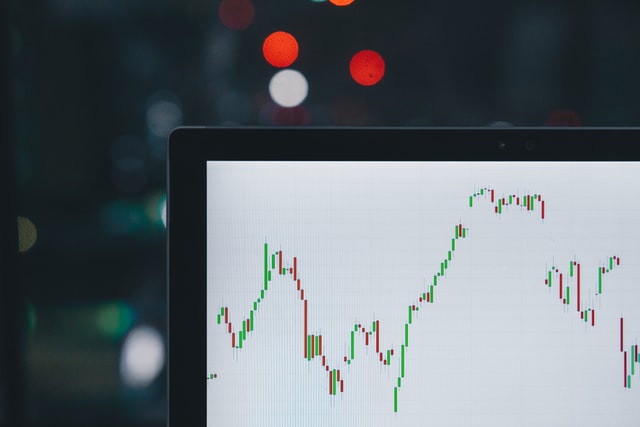Most industries have been badly impacted by COVID-19, and this includes the lending businesses that P2P investors help to fund. Several loan originators have defaulted, some are winding down, and others are at risk of doing so. There is still a lot of uncertainty about what will happen over the next 12 months. Choosing the loan originators that are most likely to survive is important for managing risk, and to generate the highest portfolio returns. So how can P2P investors identify the loan originators that have the best chance of surviving the next 12 months? We think there are 9 important things to look for, which we list below.

1. No pending payments
Pending payments are loan repayments that have not been passed onto investors yet. During the COVID-19 crisis this has become one of the best early warning signals that a lender is experiencing liquidity problems, and high levels of pending payments are a strong predictor of future default. A loan originator that has no/small amounts of pending payments is likely to be in a better liquidity position than other lenders and is more likely to survive the next 12 months.

2. Remains profitable
We expect Q2 2020 to be the most difficult quarter for lenders. Any lender able to report profits, or even small losses during this period has a strong chance of remaining in business. However, Q3 and Q4 results will also be very important, as many Covid payment deferral programs end. This may lead to spikes in loan arrears and defaults.

3. Repayments are strong
Monitoring your investor statement is an excellent way to monitor performance. It helped investors identify in April that in some countries like Spain and Poland, the proportion of loans that were being restructured was very high. If you see that the amount of principal and interest being credited to your account each week/month is much lower than expected, it can be a sign that the lender is finding it difficult to collect from its borrowers.

4. Low levels of payment deferrals
During the COVID crisis, many lenders rescheduled (extended) loans to borrowers who were experiencing difficulties. This was often forced on them by regulators, who introduced new laws. If a high proportion of loans have been extended in this way (say 25%+), a lender faces a lot of uncertainty. It is not clear if, and when, these borrowers will be able to repay. Lenders with high levels of payment deferral loans may suffer significant losses over the next year. If a loan originator has not provided data on the level of payment deferrals, this is a red flag.

5. Successful new bond issue
The successful issue of a new bond is a sign of confidence in a loan originator from professional and institutional investors. Having access to the bond market reduces the risk that a lender will run out of cash and provides funding diversification. Creditstar recently issued a new bond, and we expect other loan originators to do so in Sept/Oct.

6. Impairment costs are under control
One of the key metrics we look at is the level of loan impairment charges (bad debt expense) as a percentage of revenues. This is an excellent way of understanding how well a loan originator is managing its credit risk, how good its collection activities are, and how profitable its lending is. The ratio can vary from depending on their business model. If this ratio starts to increase significantly, or exceeds 40%, the risk of default is elevated.

7. Lending is increasing
Most lenders significantly cut back their new lending in March and April 2020. That was definitely the right thing to do. The volume of new loans originated since then can provide some insights into the financial position of a lender. The more healthy loan originators have started to grow their lending volumes again, as they are able to lend at high interest rates and be selective about which customers to grant loans to. Lenders in distress have been unable to restart lending due to liquidity problems, operational issues and credit concerns.

8. Interest rates paid are falling
P2P investors are getting more selective about which loans they buy, which is great. This has led to a wider range in the interest rates that different lenders pay to investors. The best loan originators currently have excess demand for their loans, and interest rates are falling. For example, the rates available on Peerberry for Aventus Group loans has fallen from 14% at the peak of the Covid crisis, to only 9% today. Loan originators that have strong investor demand are in a much better position to be able to obtain the funding they require, and survive the next 12 months.

9. Regular, detailed updates are provided
Stronger loan originators tend to provide regular, detailed information, including quarterly financial results, and updates on the performance of the loan book. Investors should be wary of any loan originators that have not provided any financial updates since the COVID crisis started. We are also wary of any lenders who provide investor presentations that contain little data, and mainly 'PR' type of content. We are much more interested in NPL ratios and repayment cashflows, than photos of staff handing out food parcels. While we commend charity efforts, the PR content is often being used to draw attention away from the issues some lenders are facing.
Item 11.
Socially sustainable model. Prestamer (Robocash ES) for example lends at 2.99% per day (sic). I wouldn’t bet on them surviving long before getting forcibly closed by the Central Bank.
It contradicts my previous positive comment but meanwhile things happened, like the Cashwagon Police raid.
That’s a great point
>>Creditstar recently issued a new bond
Hello,
Do you have details about this issue? Not just the bond characterisrics, they are available at Nasdaq Baltic, but the discount they offered and the subscription level. Issuing a bond is a thing, it doesn’t mean it’s a success. They were in competition with other similar bonds with YTM in the ~20% then (today: ~15%) i’d be surprised they sold it in full, at par.
That information is not going to be publicly available – these are effectively private placements. However they are usually issued fairly close to par, we would not expect (say) a 10% issuance discount. Regarding the YTM – you can’t always rely on that metric, because the volumes offered can be very small, and so it does not reflect what an investor looking to (say) invest €1m would be expecting to receive. They probably wouldn’t be able to invest much of that €1m at a 20% yield (as seen by the yield dropping to 15% very quickly).
Good point for the YTM, on such bonds most of the order book is either dark or completly OTC.
Mogo chose transparency when it increased its bond amount: 5% discount (over 9.5% yield). But it’s fair to keep it closed.